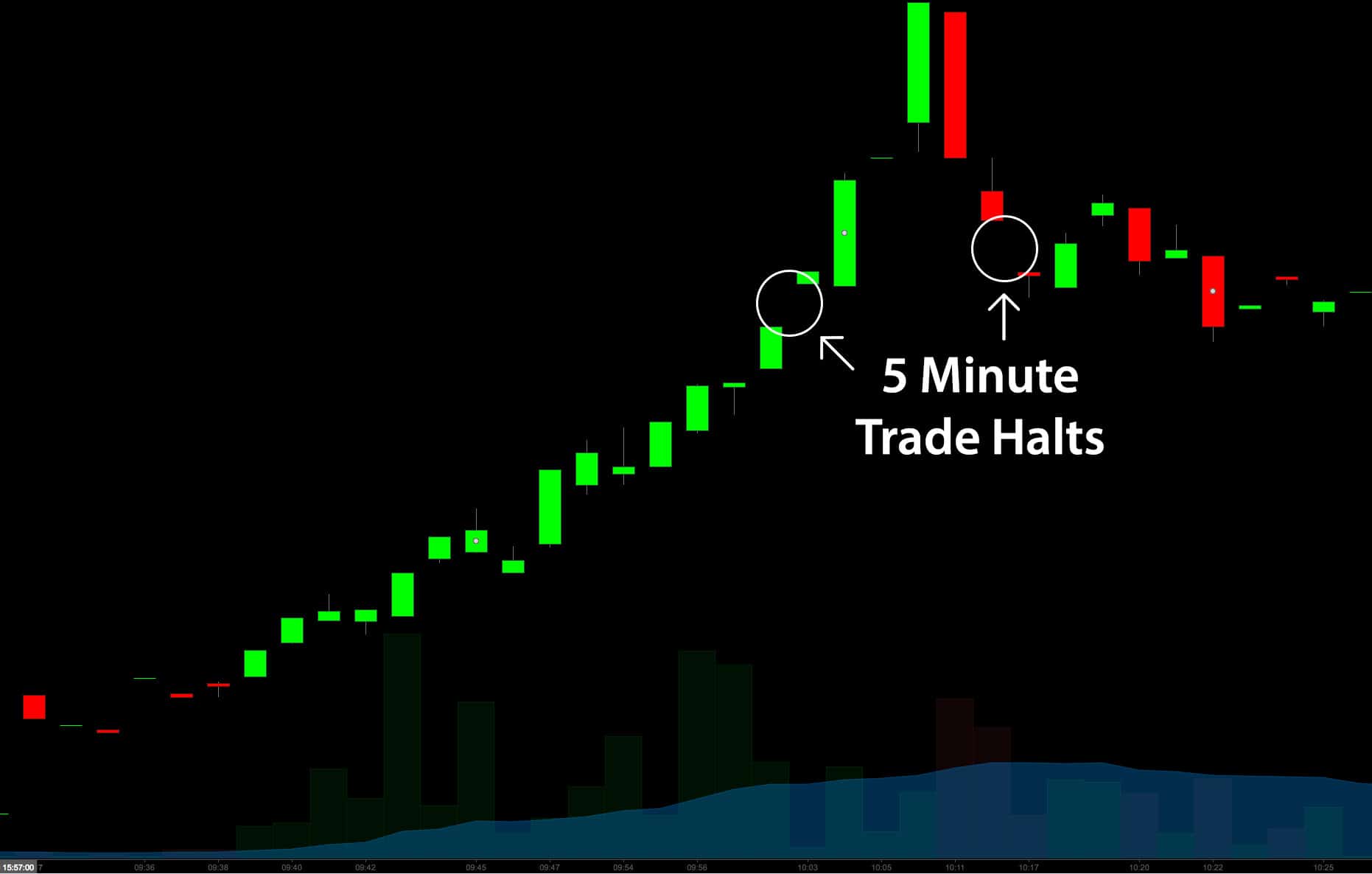Introduction
Trading halts are temporary suspensions in trading activity for a specific security or across an entire market. These halts are implemented by stock exchanges or regulatory bodies to ensure the fair and orderly functioning of financial markets. During a trading halt, investors are unable to buy or sell the affected securities, and all trading activity is temporarily paused.
Trading halts are a crucial mechanism that helps maintain market stability and protect investors’ interests. They are typically implemented in response to significant events or to prevent excessive volatility and manipulation in the market. By halting trading, regulators have an opportunity to assess the situation, disseminate important information, and make decisions that are in the best interest of market participants.
In this article, we will delve into the concept of trading halts, the reasons behind their implementation, how they are carried out, and the impact they have on investors. We will also explore some real-world examples to provide a better understanding of how trading halts work in practice.
What is a Trading Halt?
A trading halt is a temporary suspension of trading activity for a specific security or for an entire market. It is implemented by stock exchanges or regulatory bodies to maintain market stability and protect investors’ interests.
During a trading halt, trading for the affected security is paused, and investors are unable to buy or sell shares of that particular company. This means that all orders for the halted security are put on hold until the trading halt is lifted. The purpose of a trading halt is to provide a period of time for regulators to assess the situation, disseminate important information, and make informed decisions that ensure the fair and orderly functioning of the market.
Trading halts can be imposed for various reasons, including significant news announcements, unexpected events, or when there is a need to investigate potential violations of trading rules. For example, a company may request a trading halt if it is about to release important financial information that could significantly impact its stock price. This allows investors to have equal access to the information and prevents any unfair advantage for those who may have received the news earlier.
It is important to note that trading halts can be implemented at different levels. They can be specific to a single security, such as a company’s stock, or they can be applied to an entire market, affecting multiple securities. In the case of a market-wide trading halt, all trading activity for the listed securities is temporarily suspended.
Trading halts are typically announced in advance, giving investors and market participants time to prepare and adjust their trading strategies accordingly. This helps to minimize disruption and ensure a smooth transition when the trading halt is lifted.
Reasons for Trading Halts
There are several reasons why trading halts may be implemented in financial markets. These halts are designed to protect investors, maintain market integrity, and ensure a fair and orderly trading environment. Let’s examine some common reasons for trading halts:
- Material News Announcements: Trading halts are frequently used when a company is about to release material news or announcements that could significantly impact its stock price. This pause in trading allows all investors to have equal access to the information and prevents any unfair advantage for those who may have received the news earlier.
- Price Volatility: Rapid price movements and extreme volatility can be disruptive to the market and pose risks to investors. Trading halts may be imposed to prevent excessive price swings and to allow time for both investors and regulators to assess the situation and make informed decisions.
- Market-wide Events: In times of extreme market turbulence or unforeseen events, such as natural disasters or political instability, trading halts may be implemented to provide a temporary pause in trading activity. This allows market participants to regroup, reassess risks, and prevent panic selling or buying.
- Investigation of Trading Rule Violations: Regulators may initiate a trading halt to investigate potential violations of trading rules or suspected market manipulation. This pause in trading activity allows time for a thorough investigation to take place, helping to ensure the integrity of the market and protect investors.
- Technical Glitches or System Failures: In the event of technical glitches or system failures that impact the trading platform or infrastructure, exchanges may implement a trading halt. This allows time to resolve the issues and ensure a fair and orderly trading environment for all participants.
These are just a few examples of the reasons why trading halts may be imposed. The specific criteria for implementing a trading halt can vary depending on the regulations and policies of each stock exchange or regulatory body. It is important to note that trading halts are temporary measures and are lifted once the situation is resolved or the predetermined time limit has expired.
How are Trading Halts Implemented?
Trading halts are implemented by stock exchanges or regulatory bodies to temporarily suspend trading activity for specific securities or across an entire market. The process of implementing a trading halt follows a set of well-defined procedures to ensure the fair and orderly functioning of financial markets.
When a trading halt is triggered, the exchange or regulatory body will issue an official announcement to inform market participants of the impending halt. This announcement includes details such as the security or securities affected, the reason for the halt, and the expected duration of the pause in trading.
Once the trading halt is in effect, investors are unable to buy or sell the halted security or securities. All open orders for the affected securities are placed on hold, and trading activity is temporarily suspended. This ensures that no trades can be executed until the trading halt is lifted.
During the trading halt, regulators and market participants have an opportunity to assess the situation, disseminate important information, and make necessary decisions. This may include evaluating the impact of significant news announcements, conducting investigations into trading rule violations, or addressing technical glitches or system failures.
The duration of a trading halt can vary depending on the reason for the halt and the market conditions. In some cases, trading halts may have a predetermined time limit, after which trading activity resumes automatically. However, in other situations, the duration of the halt may be indefinite, depending on the resolution of the underlying issue or the assessment made by regulators.
Once the conditions that led to the trading halt have been resolved or the predetermined time limit has expired, the exchange or regulatory body will issue another announcement to lift the trading halt. Trading activity for the affected securities can then resume, and investors are once again able to buy or sell shares of the halted security or securities.
It is worth noting that trading halts can impact the trading and liquidity of the affected securities. Depending on the news or events prompting the halt, there may be significant price movements once trading resumes. Investors should stay vigilant and consider the potential impact of trading halts on their investment strategies.
Impact of Trading Halts on Investors
Trading halts can have various impacts on investors, both positive and negative, depending on the specific circumstances and the individual’s investment strategy. Here are some key factors to consider regarding the impact of trading halts on investors:
- Ability to React: Trading halts can limit the ability of investors to react to market events or news in real-time. During a halt, investors are unable to buy or sell the affected securities, which means that they may miss out on potential trading opportunities or be unable to exit positions.
- Price Volatility: Halting trading can help control extreme price volatility that could be harmful to investors. By temporarily suspending trading, it provides a cooling-off period and prevents panic selling or buying, allowing investors to assess the situation before making decisions.
- Information Asymmetry: One of the primary reasons for trading halts is to ensure fair and equal access to material information. By halting trading, all investors have the same opportunity to receive and process important news or announcements before making trading decisions. This promotes a level playing field and reduces the risk of information asymmetry.
- Risk Management: Trading halts can provide a valuable opportunity for investors to reassess their risk exposure and adjust their strategies accordingly. The pause in trading allows investors to evaluate the potential impact of news or events and consider any necessary adjustments or hedging techniques.
- Market Illiquidity: During trading halts, certain securities may experience reduced liquidity, making it challenging to execute large trades or exit positions at preferred prices. This can be particularly problematic for institutional investors or those holding large positions in the affected securities.
It is important for investors to stay informed and be prepared for potential trading halts. They should stay updated with market announcements and company news to anticipate any potential halts that may impact their investments. Additionally, maintaining a diversified portfolio can help mitigate the impact of trading halts on individual securities and overall investment performance.
Overall, while trading halts may temporarily disrupt trading activity, they are implemented with the intention to protect investors, maintain market integrity, and ensure a fair and orderly trading environment. By understanding the impact of trading halts and adapting their investment strategies accordingly, investors can navigate these temporary pauses in trading activity more effectively.
Examples of Trading Halts
There have been several instances where trading halts have been implemented in financial markets, impacting individual securities or even entire markets. These examples illustrate the diverse range of events and circumstances that can lead to trading halts. Here are a few notable examples:
- Flash Crash of 2010: On May 6, 2010, the U.S. stock market experienced a sudden and severe drop in prices, known as the “Flash Crash.” As a result of the extreme volatility, several trading halts were triggered. Individual stocks, such as Accenture and Procter & Gamble, experienced brief trading halts to allow market participants to reassess the situation and prevent additional panic selling.
- Company-Specific News: Trading halts often occur when companies are about to release significant news or announcements that can impact their stock prices. For example, in 2018, trading in Facebook shares was temporarily halted when news broke about the data privacy scandal involving Cambridge Analytica. This allowed investors time to absorb the information and make informed trading decisions.
- Market-wide Halts: In times of extreme market volatility or unexpected events, trading can be halted across an entire market. A notable example of a market-wide halt occurred during the 9/11 terrorist attacks in the United States. Trading on all U.S. stock exchanges was suspended for several days to assess the impact of the events and ensure market stability.
- Trading Rule Violations: Trading halts can also be imposed to investigate potential violations of trading rules or market manipulation. In 2018, the Hong Kong Securities and Futures Commission halted trading in several stocks amid concerns of market manipulation and suspicious trading activities. The halt allowed regulators to investigate and take necessary actions to safeguard market integrity.
- Technical Glitches: Technical glitches or system failures can also prompt trading halts. One example is the “Knightmare” incident in 2012 when Knight Capital Group experienced a glitch in its trading system, resulting in erroneous orders and significant losses. As a result, trading in Knight Capital’s stock was halted while the issue was resolved.
These examples highlight the importance of trading halts in maintaining market stability, protecting investors, and ensuring a fair and orderly trading environment. They demonstrate how trading halts can be triggered by a range of events, from significant news announcements to market-wide disruptions or trading rule violations.
It is worth noting that each market and exchange may have specific guidelines and procedures for implementing trading halts, and the duration of the halts can vary depending on the circumstances. Investors should stay informed about market regulations and stay prepared to adapt their trading strategies during times of trading halts.
Conclusion
Trading halts play a vital role in maintaining market stability, protecting investors, and ensuring a fair and orderly trading environment. These temporary suspensions of trading activity can be implemented for various reasons, such as material news announcements, price volatility, market-wide events, investigations of trading rule violations, or technical glitches.
During a trading halt, investors are unable to buy or sell the affected securities, providing regulators an opportunity to assess the situation, disseminate important information, and make informed decisions. While trading halts may impact investors’ ability to react in real-time and can cause temporary market illiquidity, they also serve as a safeguard against excessive volatility, information asymmetry, and market manipulation.
Investors should stay informed about market regulations and be prepared for potential trading halts that may impact their investment strategies. By diversifying their portfolios and staying abreast of market announcements and company news, investors can better navigate these temporary pauses in trading activity.
Ultimately, trading halts contribute to the integrity and stability of financial markets, providing a level playing field for all participants. They ensure that important information is disseminated fairly and that investors have equal opportunities to make informed trading decisions. By understanding the reasons for trading halts and their impact on investors, market participants can navigate these temporary disruptions with confidence.

























